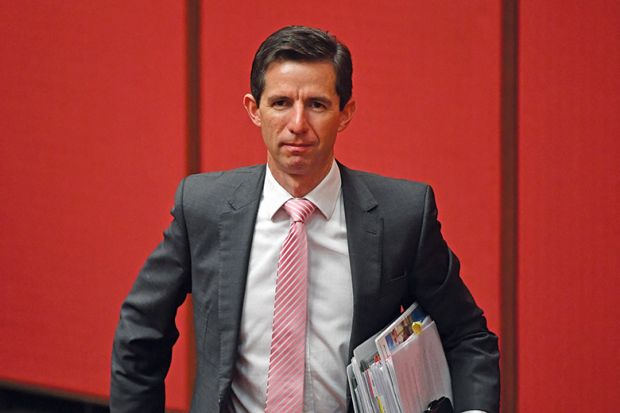The Australian government has frozen funding for undergraduate courses under reforms that leave universities A$2.2 billion (£1.3 billion) out of pocket and warning of cuts to student numbers.
In a mid-year budget update, ministers said that funding from the Commonwealth Grant Scheme for bachelor’s degrees would be kept at 2017 levels for 2018 and 2019, and that increases beyond that would be linked to “performance” and demographic data.
The two-year freeze comes after the government failed to win senators’ support for reforms that would have cut funding by A$2.8 billion over four years and increased tuition fees by 7.5 per cent.
But universities said the latest proposals effectively signalled the end of Australia’s demand-driven admissions system, given that universities looking to expand or even maintain student numbers faced a cut in real-terms funding.
Peter Høj, vice-chancellor of the University of Queensland and chair of the Group of Eight, which represents Australia’s research intensive universities, said that the announcement represented “comprehensive cuts” that would “affect the aspirations and future career opportunities” of students.
“Today is the benchmark of diminished education policy, from a government determined to bypass the legislative process that so rightly indicated majority opposition to the ill-considered cuts to education funding; savings presented as reform rather than the blatant cuts they are, and which today they are so clearly exposed to be,” he said.
The government said that it was not capping student numbers, and that it would continue to provide student loans according to demand, in addition to the maximum Commonwealth Grant Scheme payment.
However, the income threshold that triggers students to start repaying their loans has been reduced to A$45,000 a year, down from A$52,000, and a lifetime limit on student loans borrowing has been introduced (A$150,000 for students studying medicine, dentistry and veterinary science courses, and A$104,440 for other learners).
Simon Birmingham, the minister for education and training, said that the policy changes “will partially deliver on previous budget decisions that moderate the rate of funding growth, which had contributed to the budget deficit, while still driving universities to focus on the needs of students and ensure Australia’s income-contingent loan system can still be accessed by future generations of students without upfront fees”.
“Australia must face up to the task of putting our higher education costs on a more sustainable, responsible path for the future while also having a stronger focus on supporting students,” he said.
Register to continue
Why register?
- Registration is free and only takes a moment
- Once registered, you can read 3 articles a month
- Sign up for our newsletter
Subscribe
Or subscribe for unlimited access to:
- Unlimited access to news, views, insights & reviews
- Digital editions
- Digital access to THE’s university and college rankings analysis
Already registered or a current subscriber? Login








